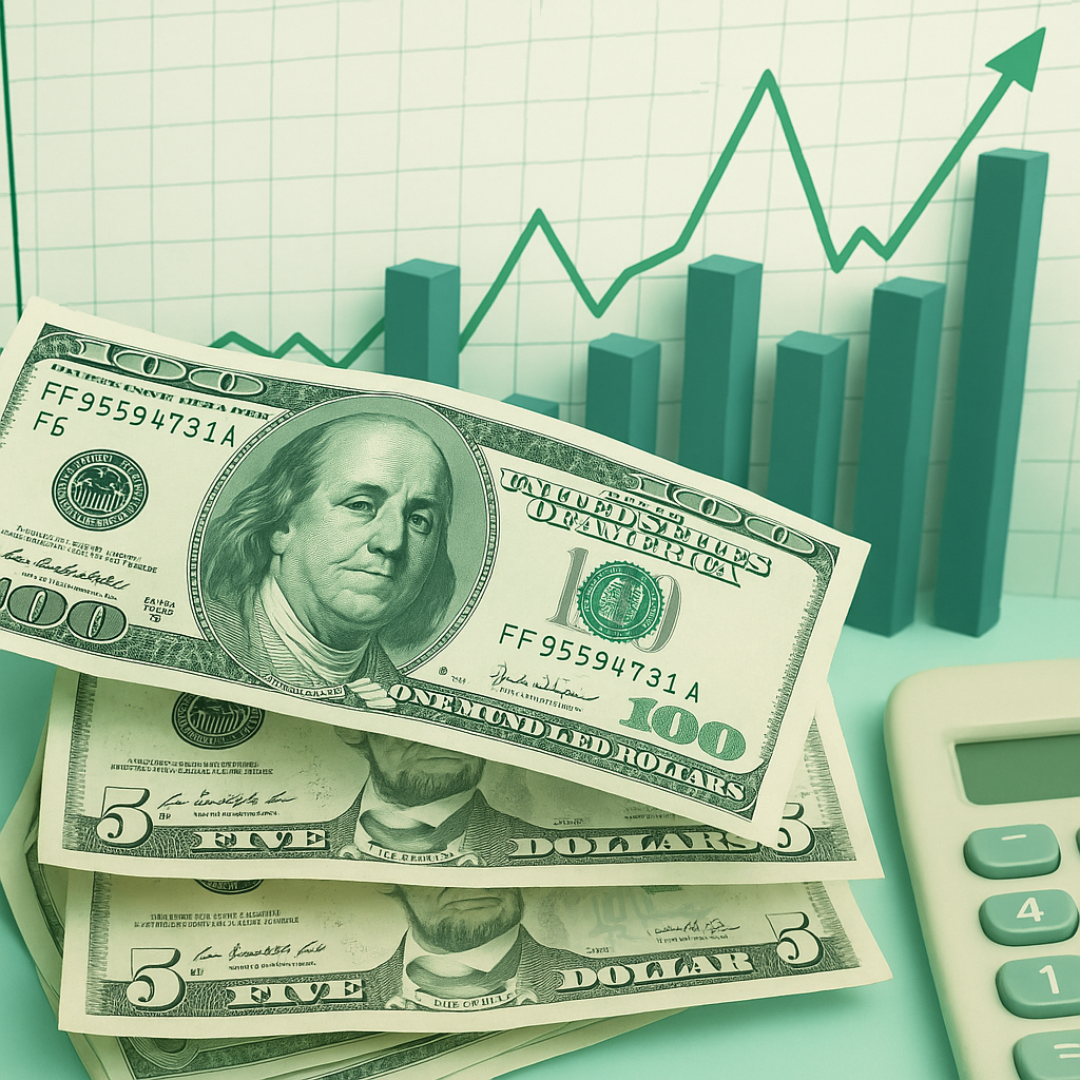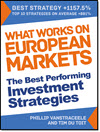If you want a simple, proven system to beat the market, this article is for you. You will learn how the Magic Formula, created by legendary investor Joel Greenblatt, works, why it still performs great after 23 years, and how to use it yourself.
The post breaks down every step clearly, backed by fresh 2022 backtest research. You will see real results, including 17.2% annual returns versus 8.0% for the market. Even better, you can run the strategy in 30 minutes a quarter. If you want less stress, more structure, and higher returns, read this now.
Estimated Reading Time: 6 minutes.
If you are looking for a stock strategy that is simple, powerful, and proven, you are going to love what you are about to learn. It is called the Magic Formula. Yes, the name sounds a bit flashy. But the idea behind it is surprisingly down-to-earth, and incredibly effective.
The Magic Formula was developed by Joel Greenblatt, a highly successful investor who shared it in his bestselling book The Little Book That Beats the Market. The formula is built to help regular investors like you find stocks of good companies at bargain prices—without needing to be an expert.
A major 2024 research paper Formula Investing by Marcel Schwartz and Matthias X. Hanauer both from the Technical University of Munich put this strategy to the test using 23 years of U.S. market data. In this post, you will see exactly how the Magic Formula was tested, how well it performed, and how you can use it in your own portfolio, even if you only invest a few times a year.
What Was Tested?
The researchers tested the Magic Formula across a dataset of U.S. stocks, from January 2000 to December 2022. That is 23 years, covering bull markets, bear markets, crashes and bubbles.
They ranked thousands of companies using two specific criteria:
-
Earnings Yield (EY) – how cheap the stock is.
-
Return on Capital (ROC) – how profitable the company is.
Companies that scored well on both were considered the best opportunities. The top 40 ranked stocks were selected, bought, and held for a quarter. Then the process repeated. No forecasts. No guesswork. Just a consistent, rules-based strategy.
And the results speak for themselves.
What Was Included and What Was Left Out?
To keep things practical and realistic, the strategy was tested on U.S.-listed common stocks from major exchanges: NYSE, NASDAQ, and AMEX.
To make the results more usable for investors like us:
-
Microcap stocks were excluded (anything smaller than the 20th percentile of NYSE market cap).
-
Financial firms were left out—banks and insurers use different accounting rules that do not fit the formula.
What was left? A wide mix of investable, liquid companies, including small and mid-sized businesses all the way up to large household names. These are stocks you can buy and sell with confidence.
How the Research Was Kept Honest
You want results that reflect real-world investing, not cherry-picked fantasy numbers. That is exactly what this study delivered. Here's how they kept things fair and accurate:
-
Used trusted data sources (CRSP for prices, Compustat for financials).
-
Applied a six-month lag after each company’s fiscal year-end to simulate real-world availability of data.
-
Rebalanced quarterly, using only information that would have been known at the time.
They even capped individual stock weights so one mega-cap could not skew the results. The process was solid—and one that you can follow yourself.
Step-by-Step: How the Magic Formula Strategy Works
Let’s break it down into clear steps that you can use yourself.
The Quant Investing stock screener does all these calculations for you. To see how easy it is look at this article: How to implement the Magic Formula investment strategy: Your Step-by-Step Guide to Investment Success.
Step 1: Calculate Earnings Yield (EY)
This tells you how cheap a stock is.
Formula: EY = EBIT / Enterprise Value
-
EBIT = operating profit before interest and taxes.
-
Enterprise Value = market value + debt – cash.
A higher EY means the stock is cheaper compared to what the business earns.
Step 2: Calculate Return on Capital (ROC)
This measures how good the business is.
Formula: ROC = EBIT / (Net Working Capital + Net Fixed Assets)
-
This shows how efficiently the company uses its capital to generate profits.
Step 3: Rank All Stocks
-
Rank all companies by EY (highest = best).
-
Rank all by ROC (highest = best).
-
Add the two ranks together. The lowest combined score = best stock.
Step 4: Pick the Top 40 Stocks
-
Only include non-financials and larger, liquid companies.
-
These are the companies that are both cheap and high quality.
Step 5: Rebalance Every Quarter
-
Refresh the list every 3 months.
-
Sell any companies that drop out of the top 40.
-
Replace them with the newly ranked top stocks.
It really is that straightforward.
Rebalancing Frequency: Why Quarterly Works Best
The strategy rebalanced every 3 months. This strikes a great balance:
-
It lets you stay up-to-date with new financial info.
-
It avoids over-trading, which could drive up costs.
For you, this means setting aside just four times a year to update your portfolio. You do not need to watch markets daily or react to news. The Magic Formula works best when you let the rules run the show.
How the Magic Formula Performed
Now for the best part, the results.
Annualised Returns, Sharpe Ratios, and Drawdowns for Each Formula
Sharpe Ratio measures risk-adjusted returns (higher is better).
Max Drawdown shows the worst peak-to-trough decline.
CAPM Alpha measures how much a strategy outperforms (or underperforms) the market after adjusting for risk. It tells you whether an investing strategy provides returns that cannot be explained by general market movements.
Source: Formula Investing
Yearly Returns from 2000 to 2022
The following table shows long only annual returns of the 40 top-ranked Magic Formula stocks. The portfolios were rebalanced quarterly with value-weighted position sizing capped at the 80th percentile of the NYSE stocks market value.
Market returns are the value-weighted returns of all stocks in the final stock universe. The back test period is 23 years from January 2000 to December 2022.
Source: Formula Investing
Note: I retyped the table and did not get the same values in the research paper. This may because of rounding errors.
From 2000 to 2022, the Magic Formula long-only portfolio of 40 stocks delivered:
-
17.2% average annual return
-
A Sharpe Ratio of 0.69 (a strong measure of risk-adjusted return)
-
Average market outperformance of 9.3% over 23 years
Compare that to the overall market return of just 8.0% over the same period. That is more than double the market return using a repeatable, rules-based strategy.
How It Held Up Over Time
The Magic Formula did well in most years—but it also went through rough patches.
From 2000 to 2002, during the tech crash, it crushed the market. From 2009 to 2014, it posted strong gains during the recovery but also underperformed in some years.
But between 2018 and 2020, it lagged, as expensive growth stocks took over.
Even so, over nearly every long-term stretch, the Magic Formula came out ahead.
What Makes the Magic Formula So Powerful?
It is the combination of two key traits:
-
Cheap stocks tend to bounce back over time (Value factor).
-
High-quality businesses keep earning and growing (Profitability factor).
You avoid junk. You skip overpriced hype. You buy what is cheap and good—and you repeat the process every quarter. That is how the strategy keeps working, even when the market gets noisy.
Is This Strategy Right for You?
If you are tired of guesswork, tips, and emotional investing, the Magic Formula gives you structure.
It is a great fit if you:
-
Want high long-term returns
-
Prefer a data-driven system over predictions
-
Can stay disciplined during periods when the strategy underperforms
-
Have 30 minutes every quarter to refresh your portfolio
This is not a get-rich-quick scheme. But it is a get-rich-reliably one.
Final Thoughts: The Real Magic Is in the Simplicity
The Magic Formula works. Not because it is magic, but because it is based on what has worked for decades: buying great businesses at good prices, over and over again.
You do not need a finance degree. You do not need to follow the news. You just need a system you trust, and the patience to stick with it.
👉 Want to build your own Magic Formula portfolio?
Use the Quant Investing screener. It ranks global Magic Formula stocks using the same formula, so you can find the top 40 in seconds.
Start your 30-day free trial and see for yourself.
FREQUENTLY ASKED QUESTIONS
1. Can I use the Magic Formula if I only invest a few times a year?
Yes, you can.
The Magic Formula works best when updated just four times a year. You pick the top 40 ranked stocks and rebalance every 3 months. You do not need to follow the market daily. This makes it perfect if you only have 30 minutes every quarter to manage your portfolio.
2. How do I know which stocks are “good” and “cheap”?
You do not have to guess.
The Magic Formula uses two numbers:
-
Earnings Yield (how cheap a stock is)
-
Return on Capital (how profitable it is)
These are based on real business results, not hype or forecasts. The best 40 stocks ranked by both are considered high quality and undervalued.
3. What kind of companies will I be investing in?
You will own real businesses, many are mid-sized or large companies you might already know.
The strategy filters out tiny stocks and banks (because they use different accounting rules). So you end up with liquid, proven companies that are easier to buy and sell.
4. How risky is the Magic Formula strategy?
No strategy avoids risk. But this one reduces it by:
-
Buying profitable companies.
-
Avoiding overpriced stocks.
-
Holding 40 stocks for diversification.
-
Rebalancing regularly to stay on track.
Over 23 years, this approach beat the market while controlling drawdowns better than most.
5. What if the strategy underperforms for a while? Should I quit?
No. That is when most people lose.
Every good strategy has rough patches. The key is sticking with it long enough. From 2000 to 2022, the Magic Formula doubled the market return—even though it lagged in some years. If you trust the process, you must stay disciplined.
6. Do I need special software to use the Magic Formula?
No spreadsheets or coding needed.
You can use the Quant Investing stock screener. It automatically calculates all the rankings and gives you the top 40 Magic Formula stocks, ready to go. It is built for private investors just like you.
7. Why does this work when so many strategies fail?
Because it focuses on what truly matters:
-
Buying cheap stocks with real profits.
-
Choosing quality companies that use capital well.
-
Following rules, not emotions.
Please note: This website is not associated with Joel Greenblatt and MagicFormulaInvesting.com in any way. Neither Mr Greenblatt nor MagicFormulaInvesting.com has endorsed this website's investment advice, strategy, or products. Investment recommendations on this website are not chosen by Mr. Greenblatt, nor are they based on Mr Greenblatt's proprietary investment model, and are not chosen by MagicFormulaInvesting.com. Magic Formula® is a registered trademark of MagicFormulaInvesting.com, which has no connection to this website.


